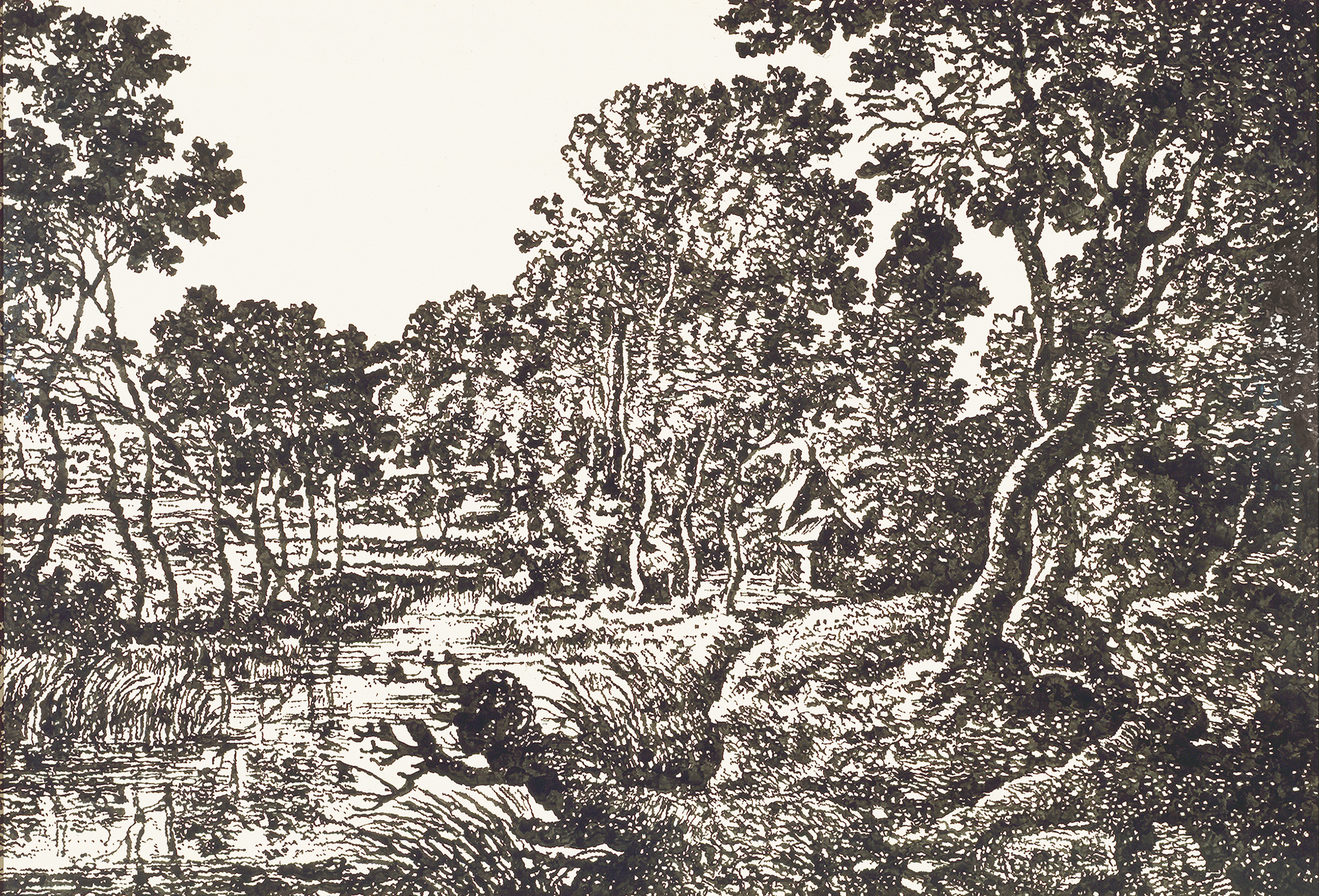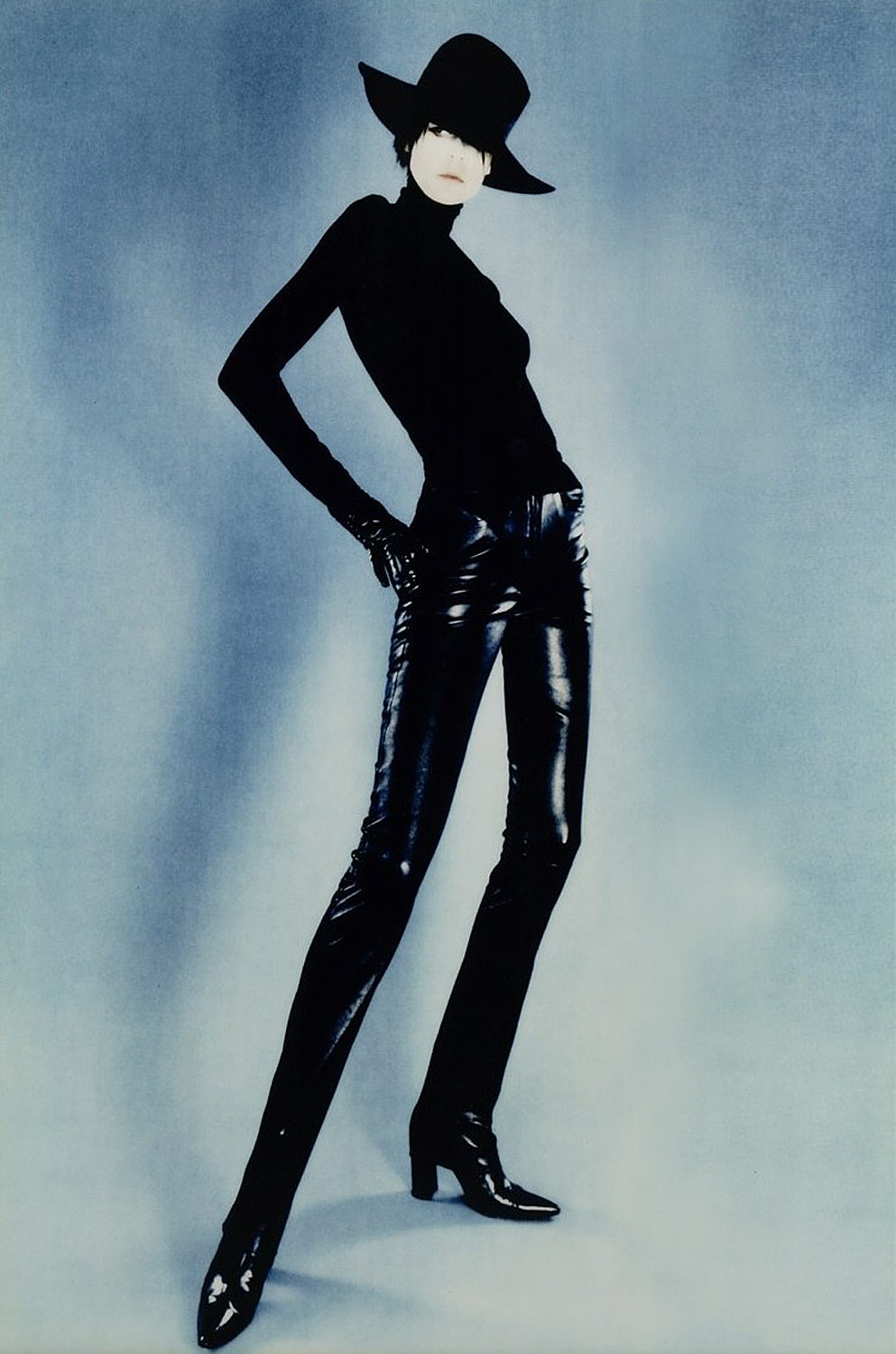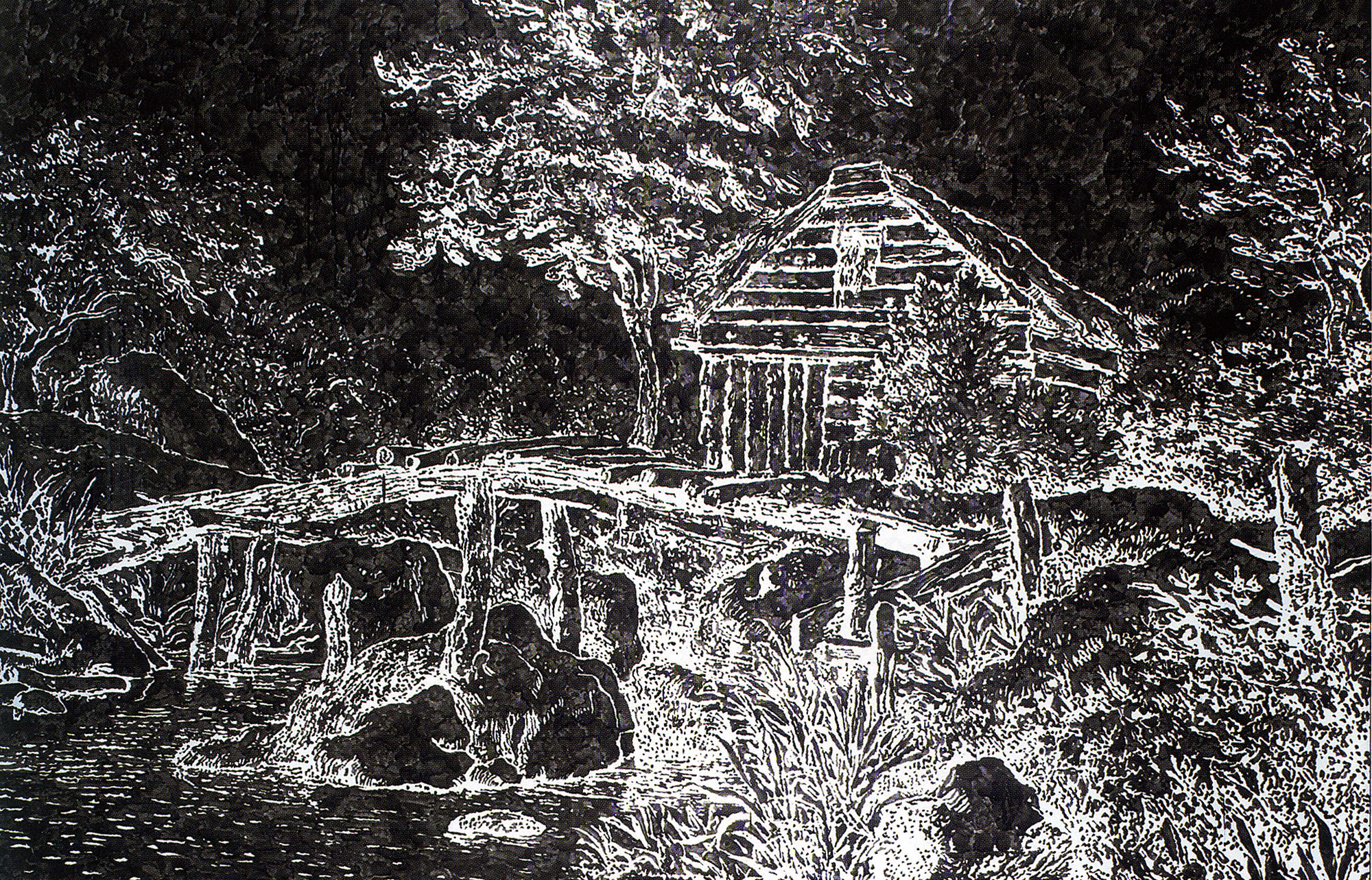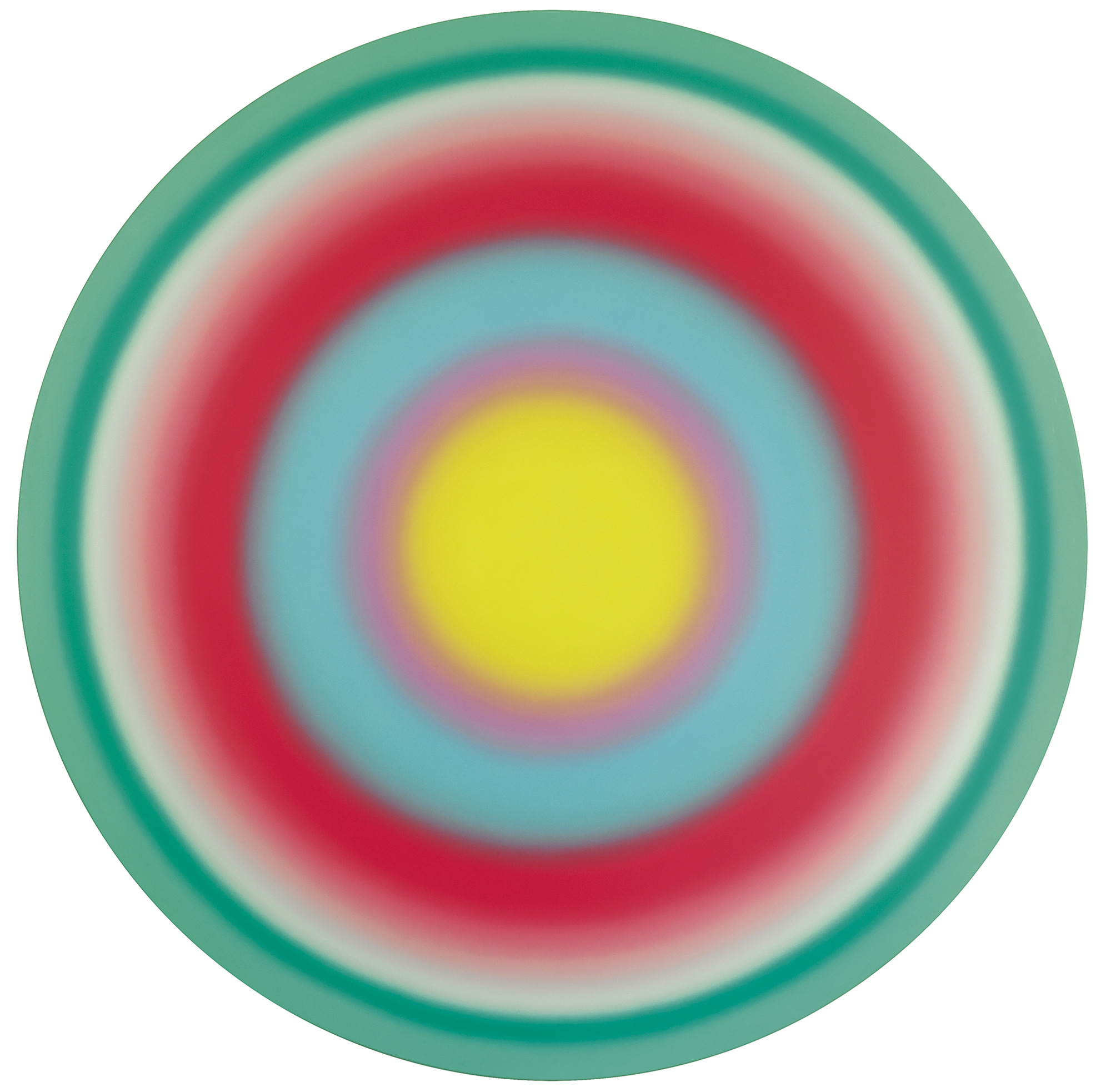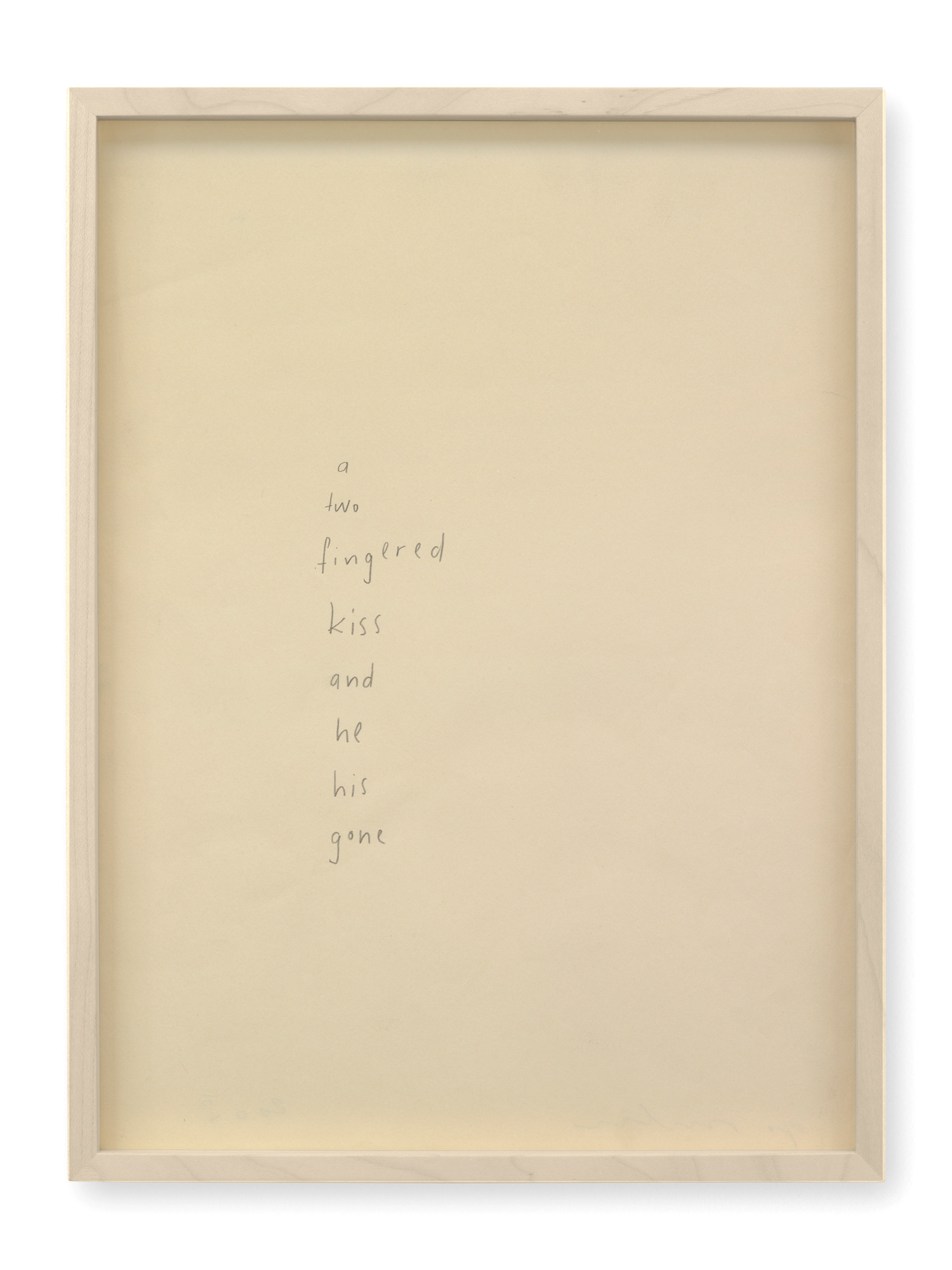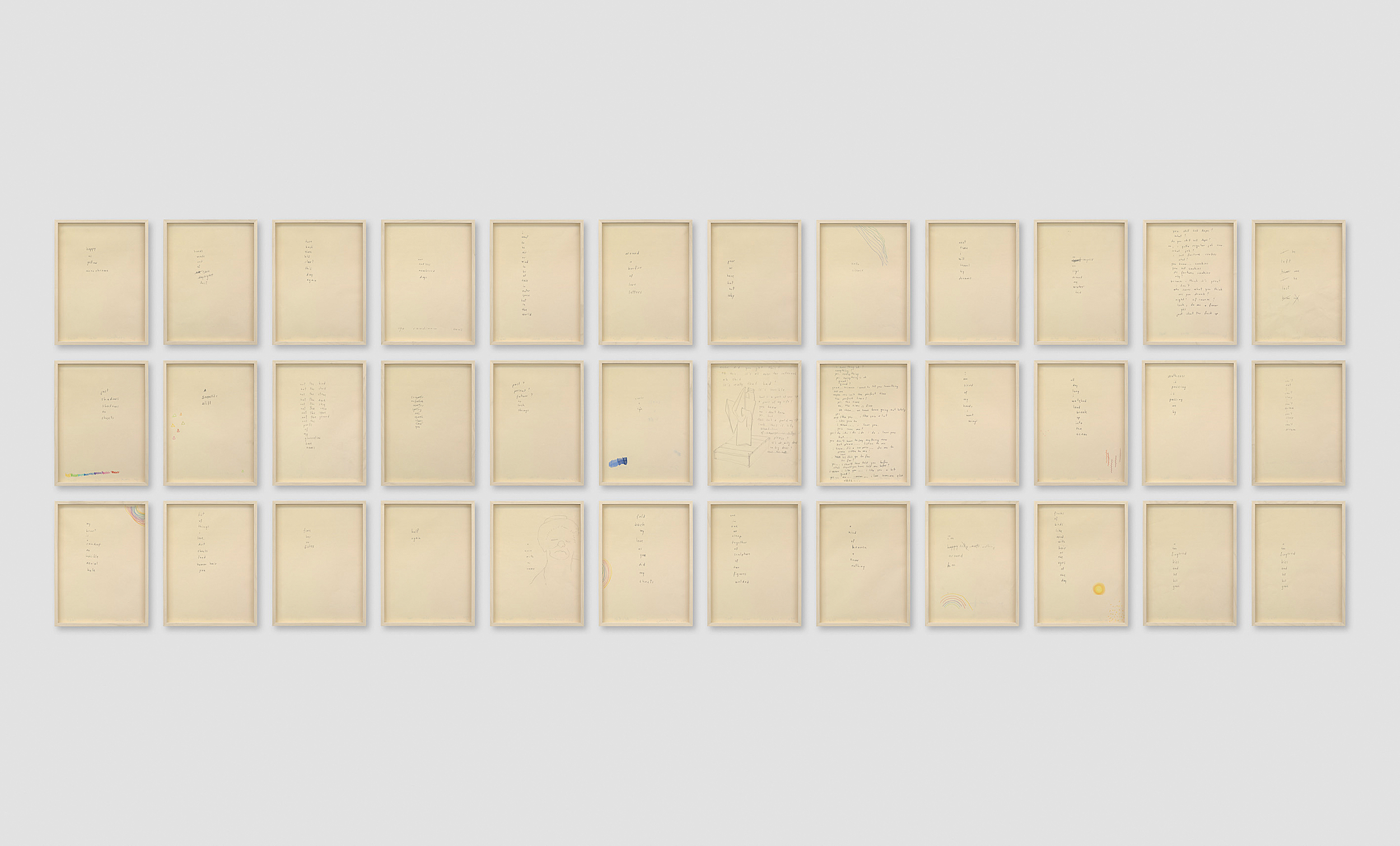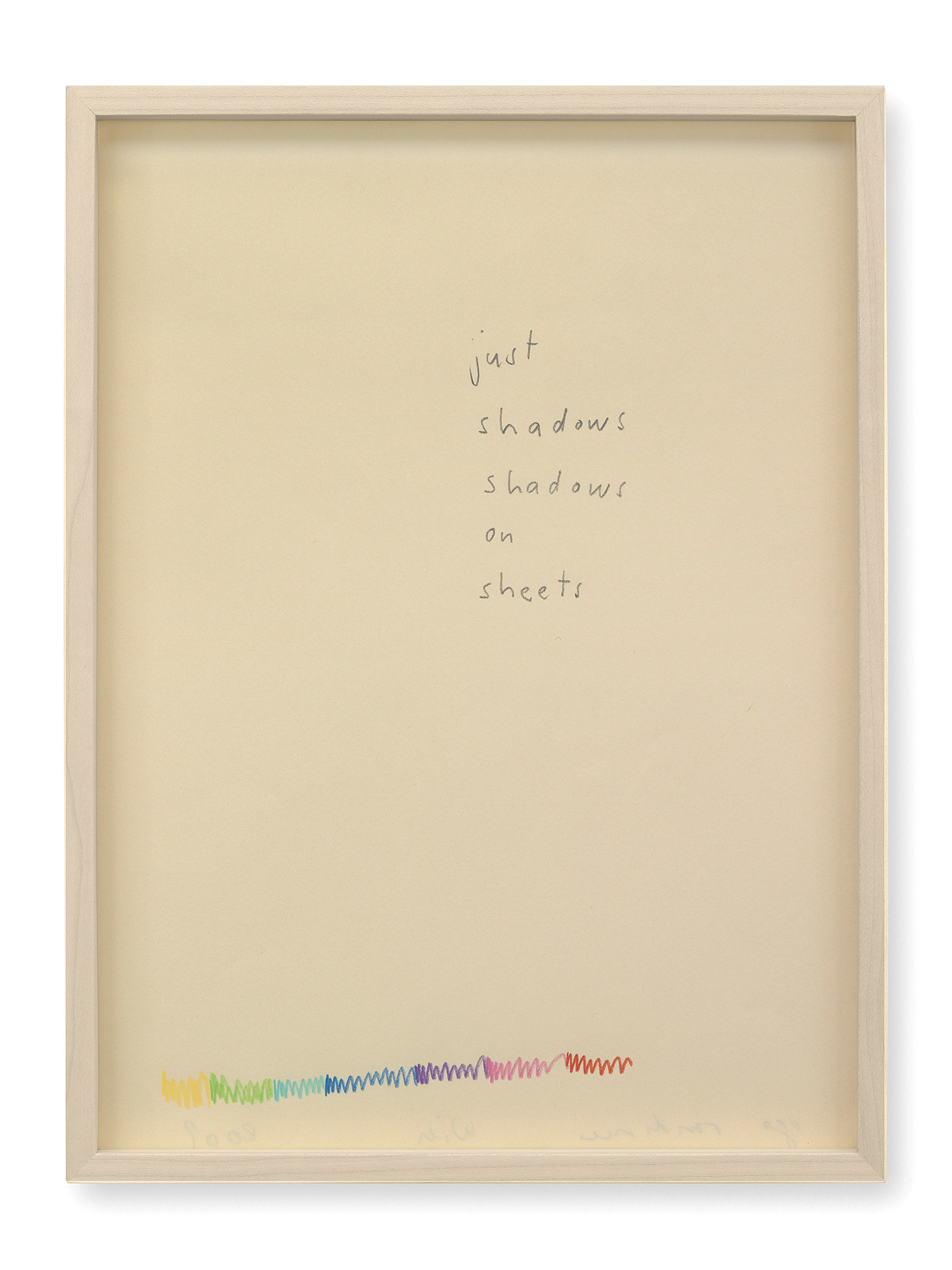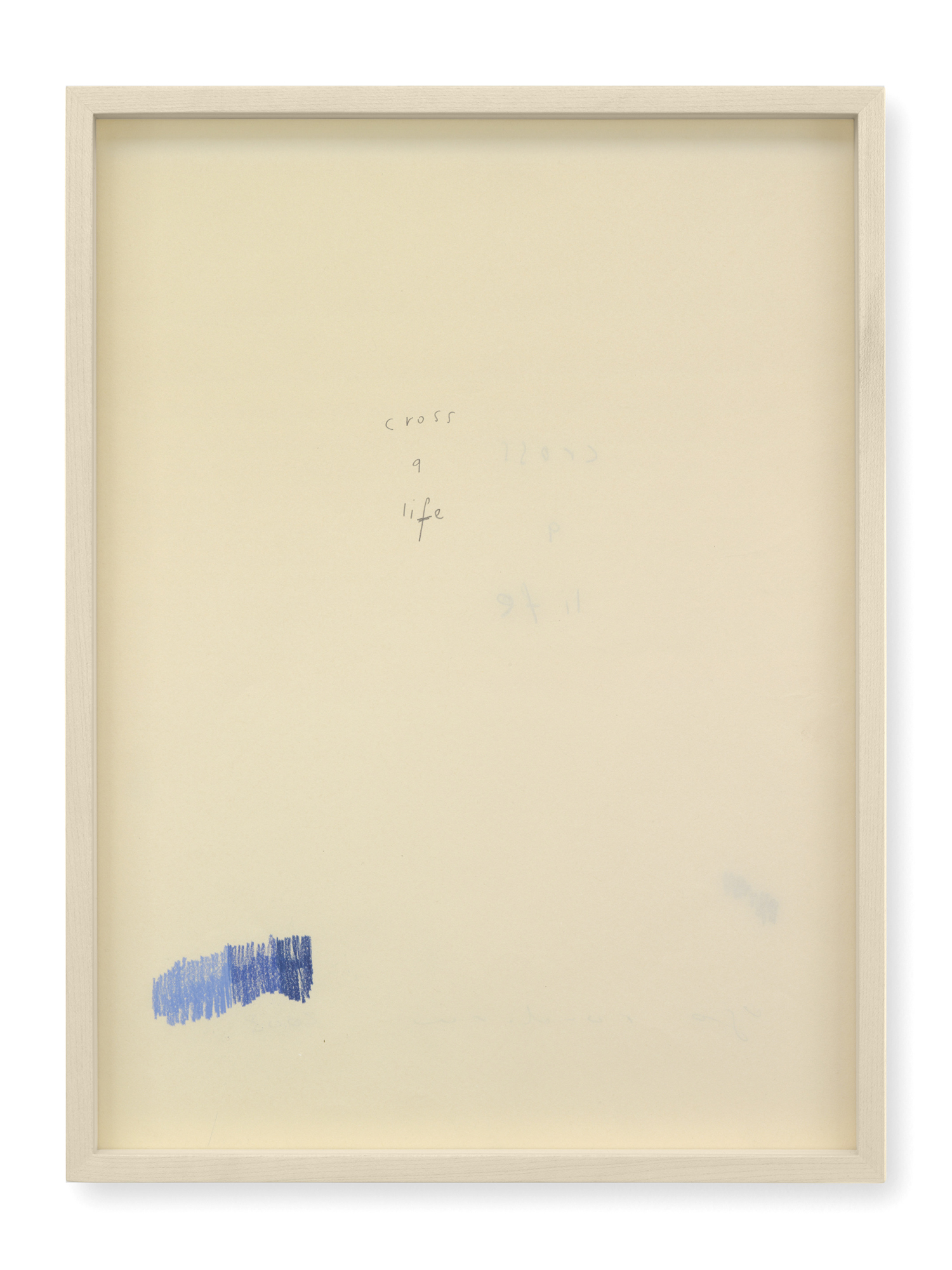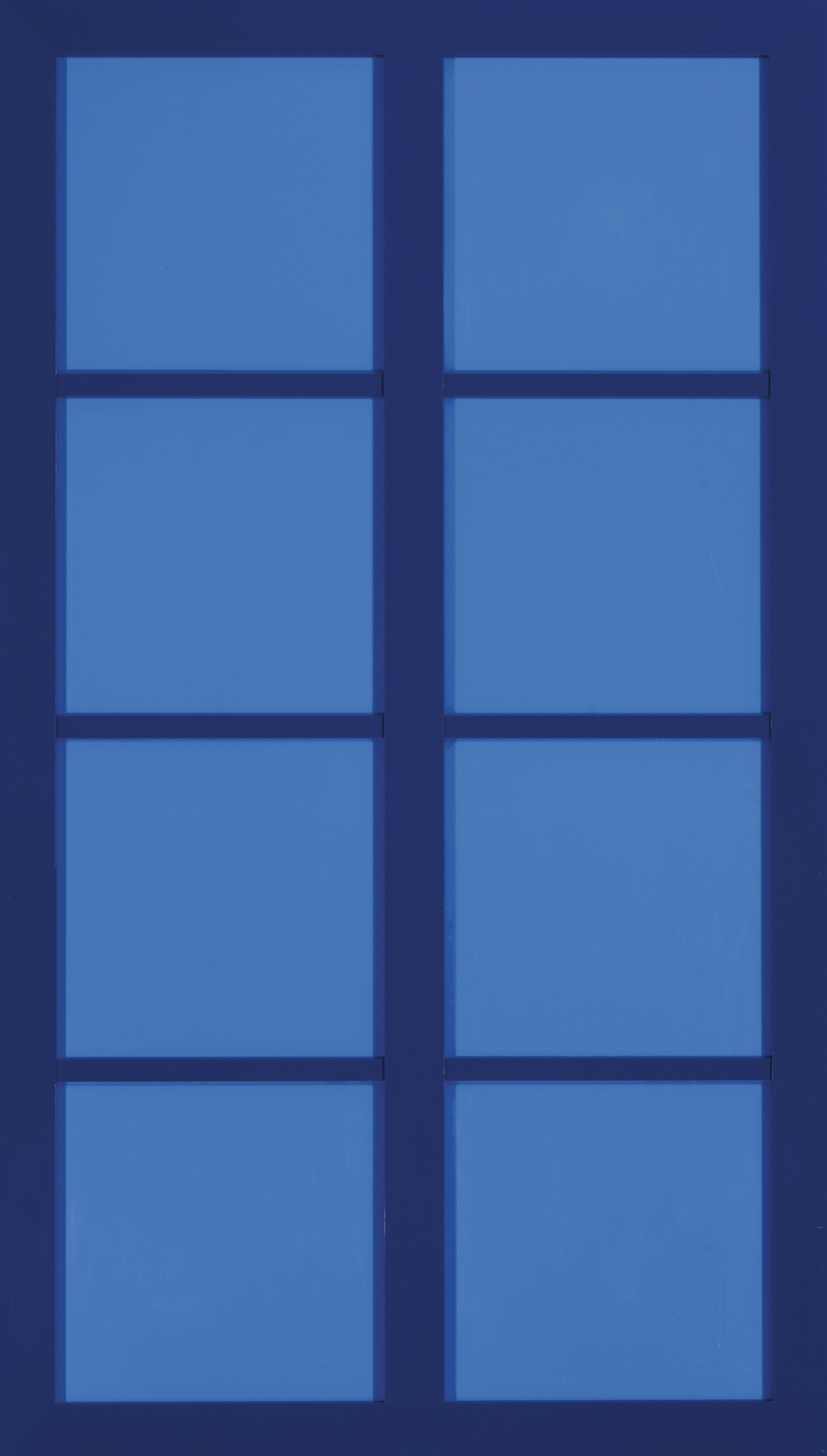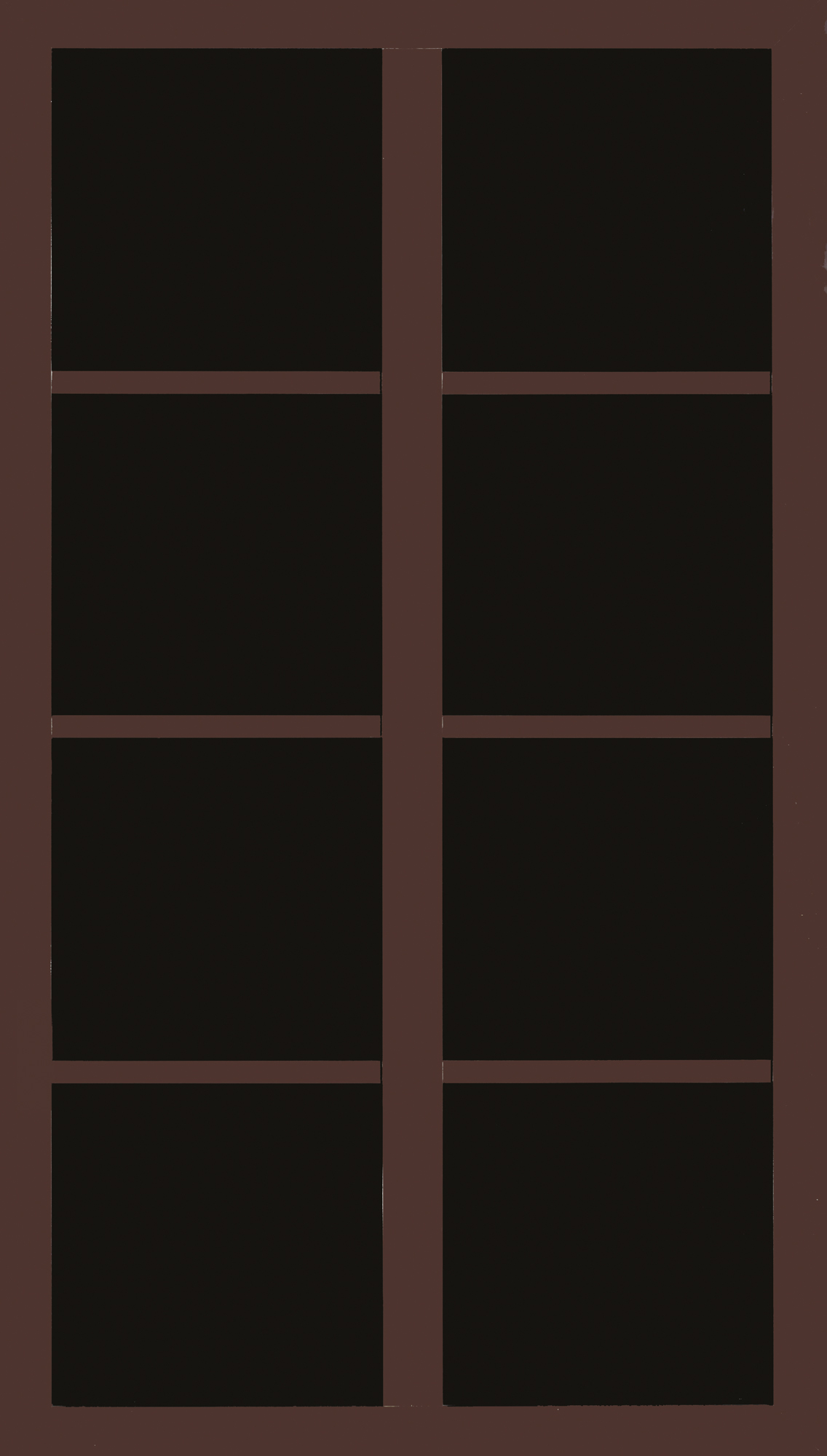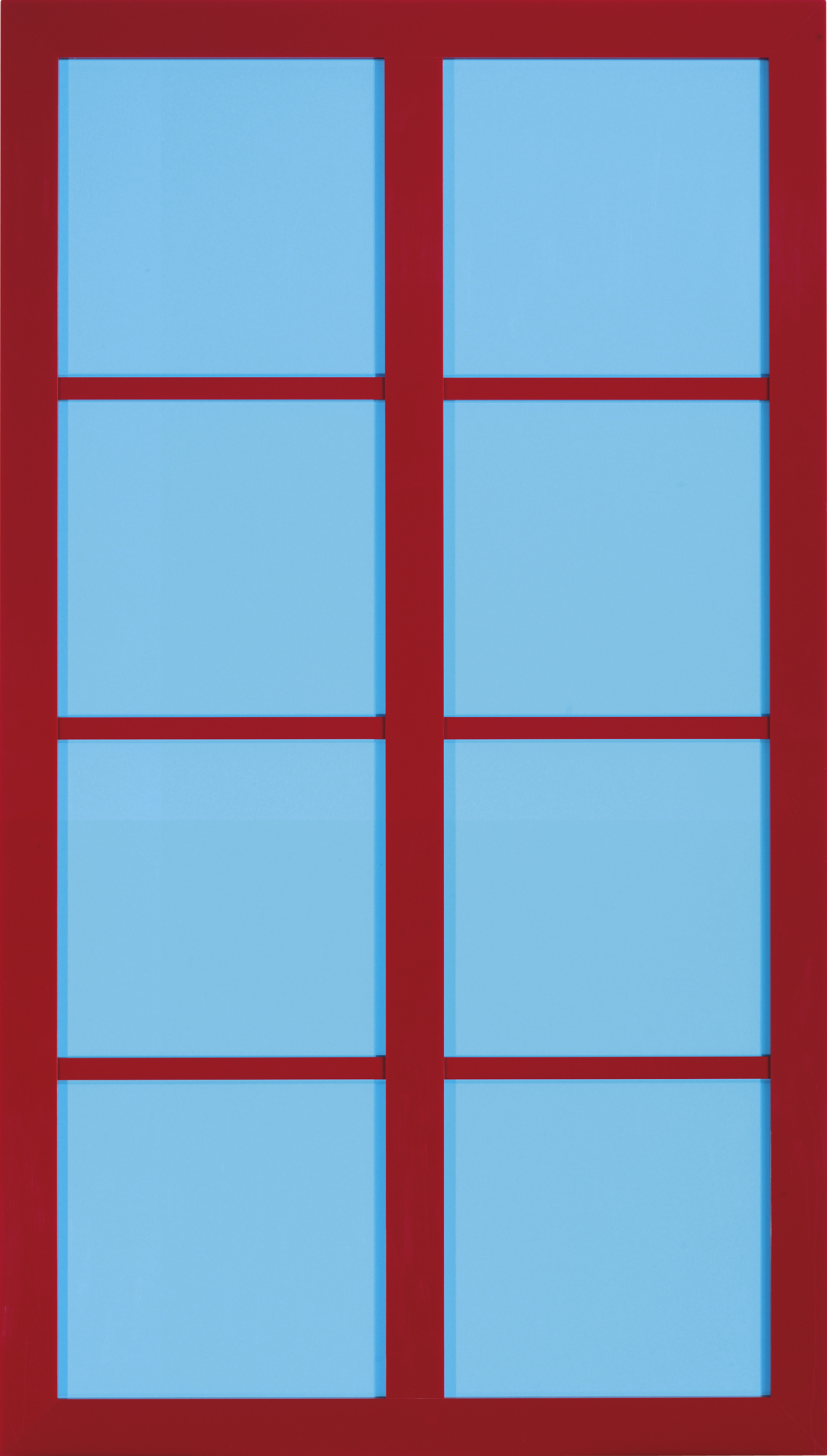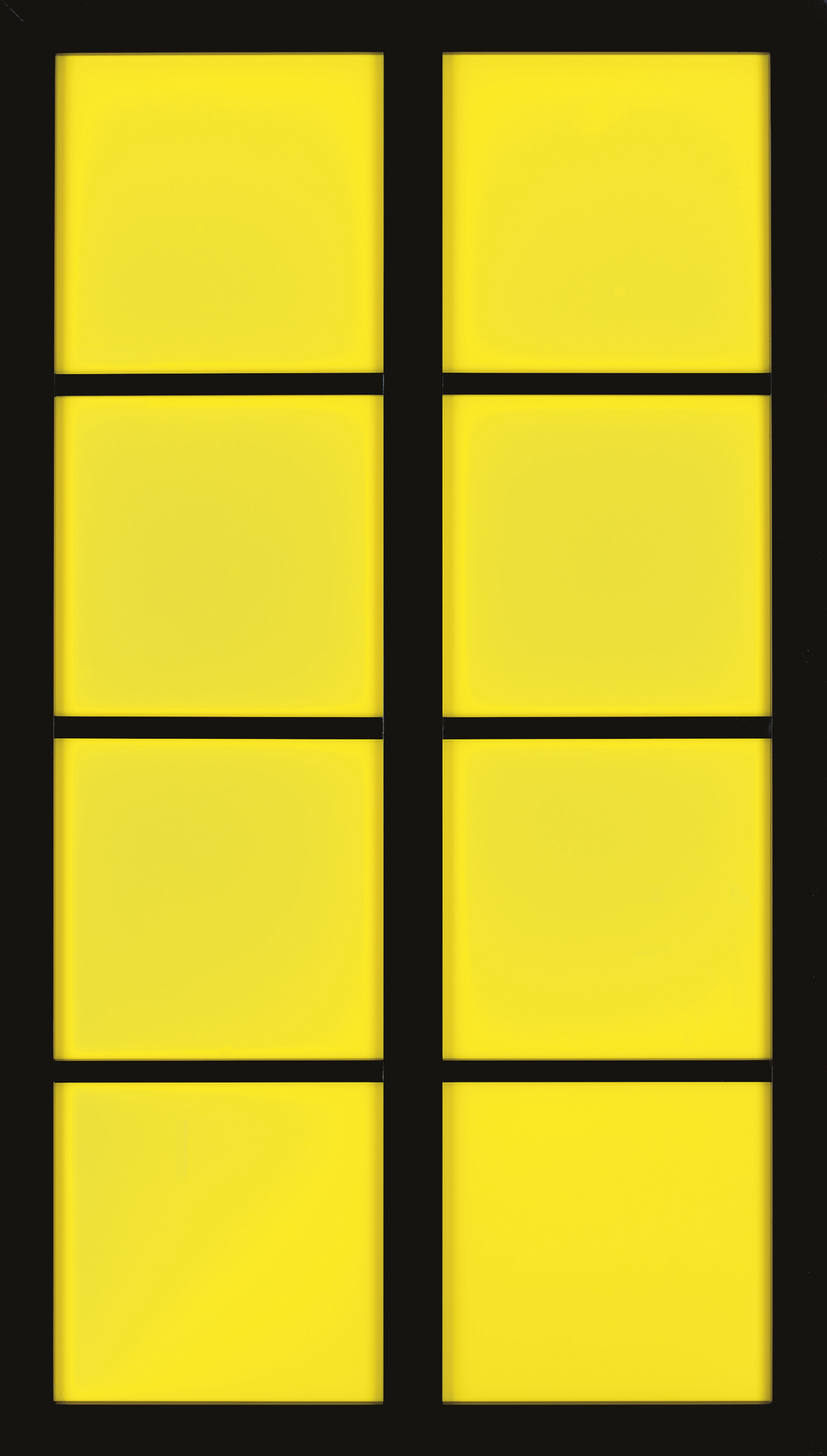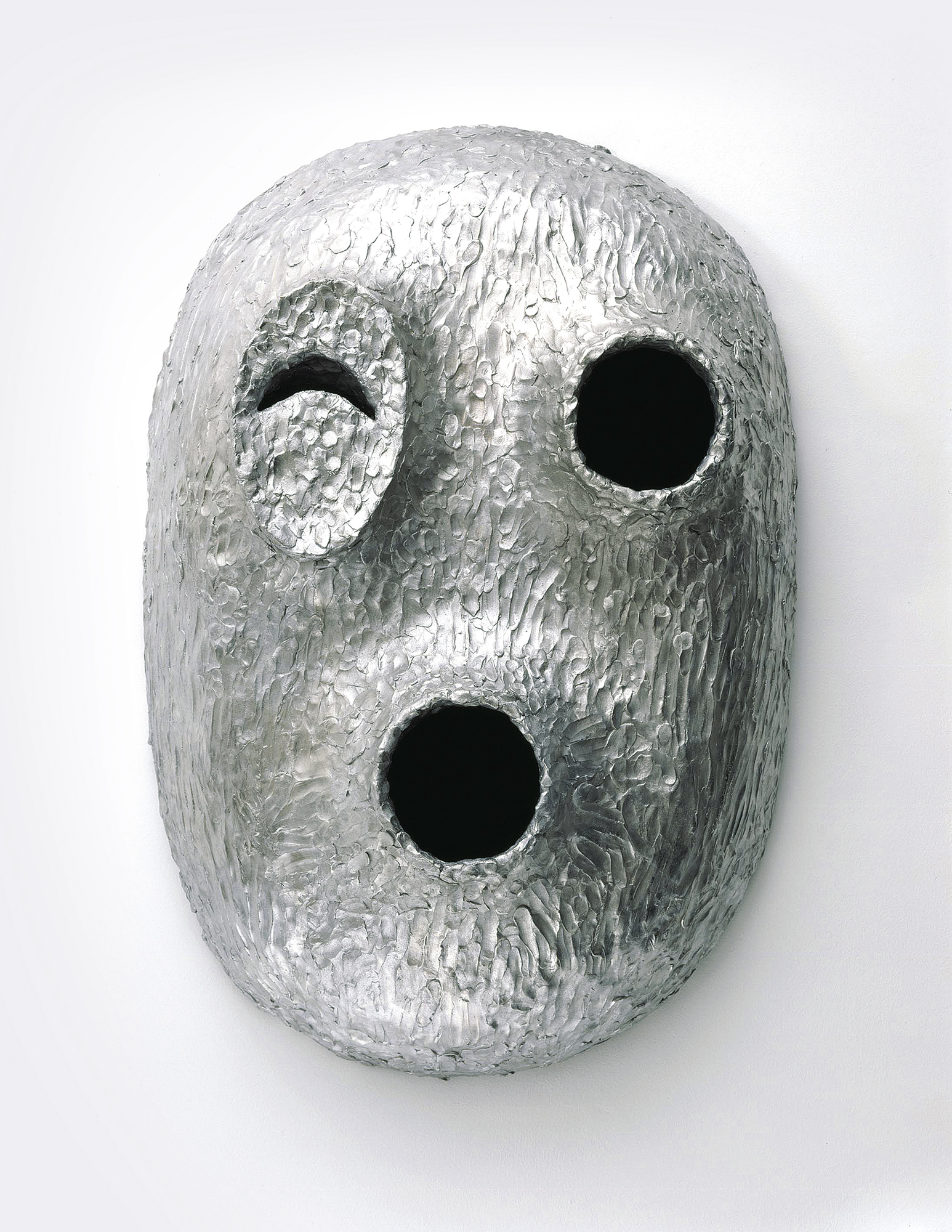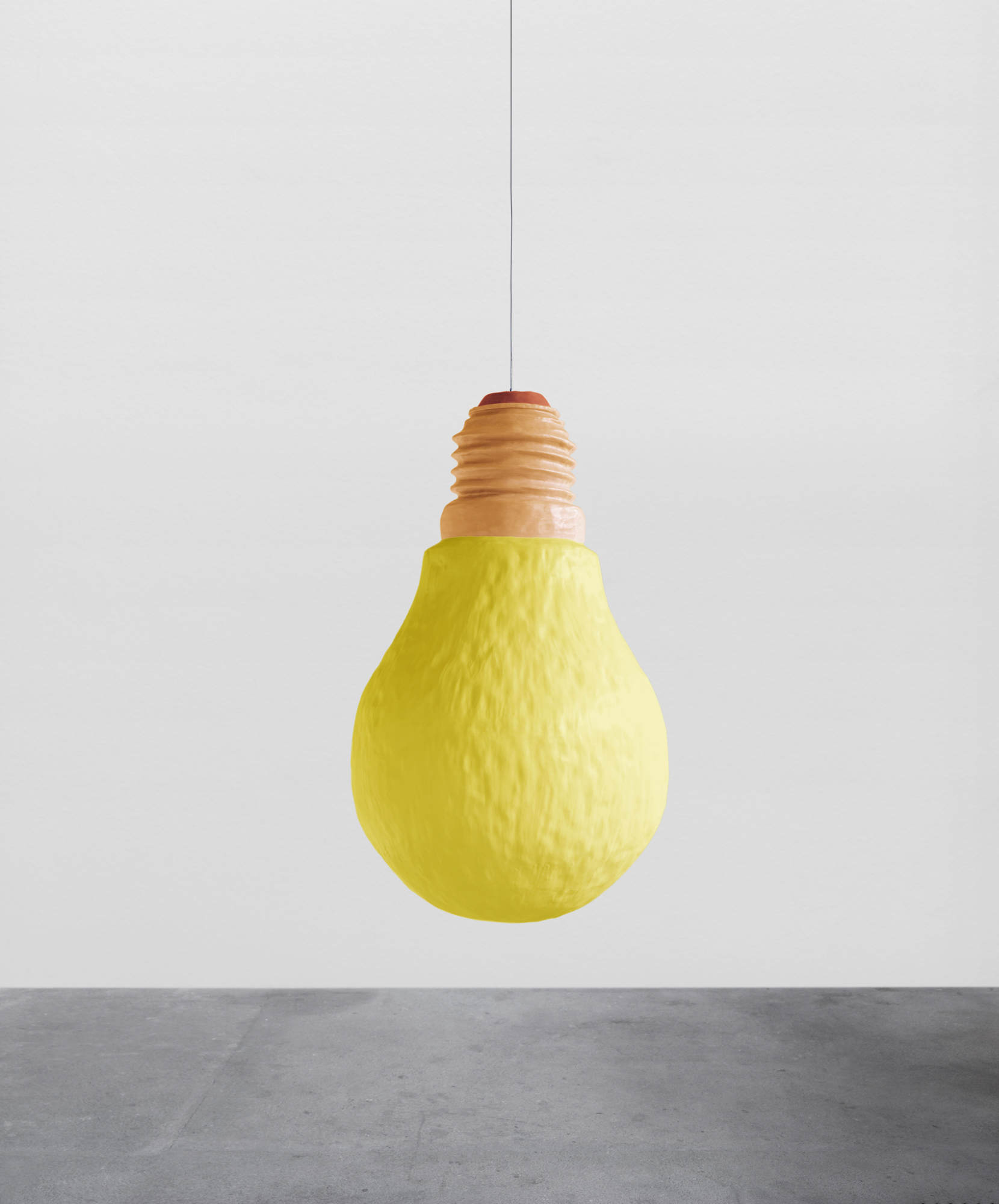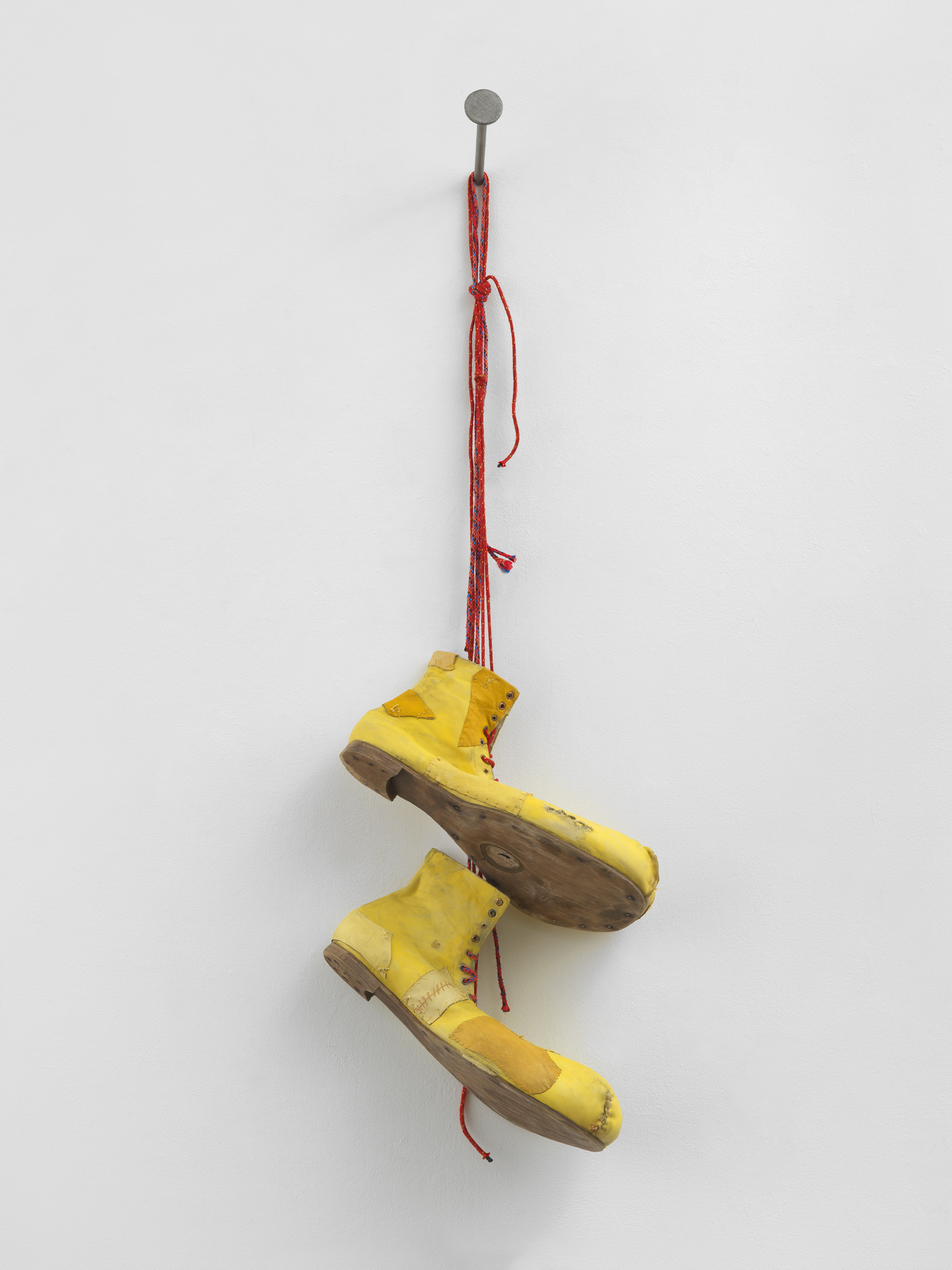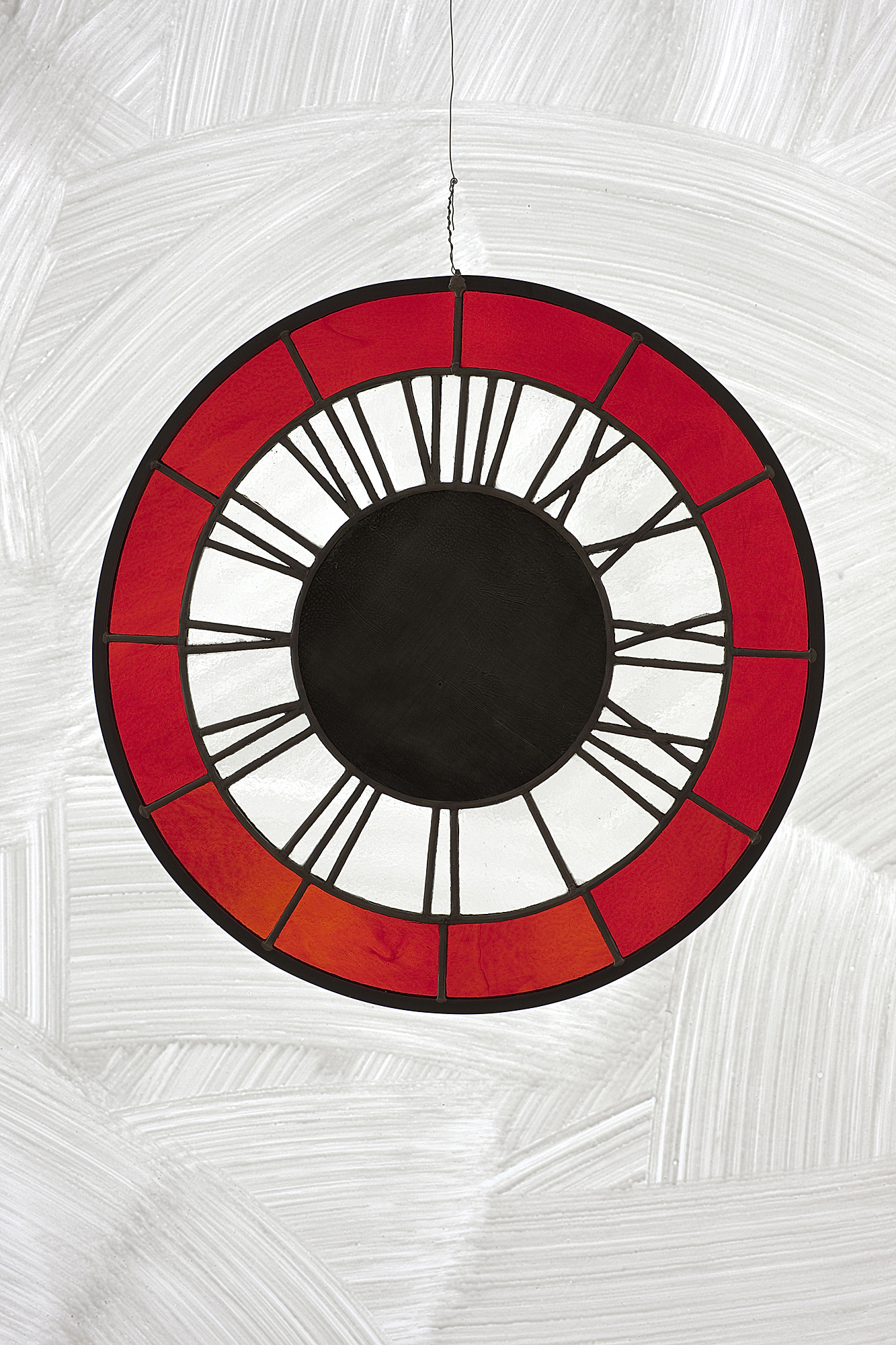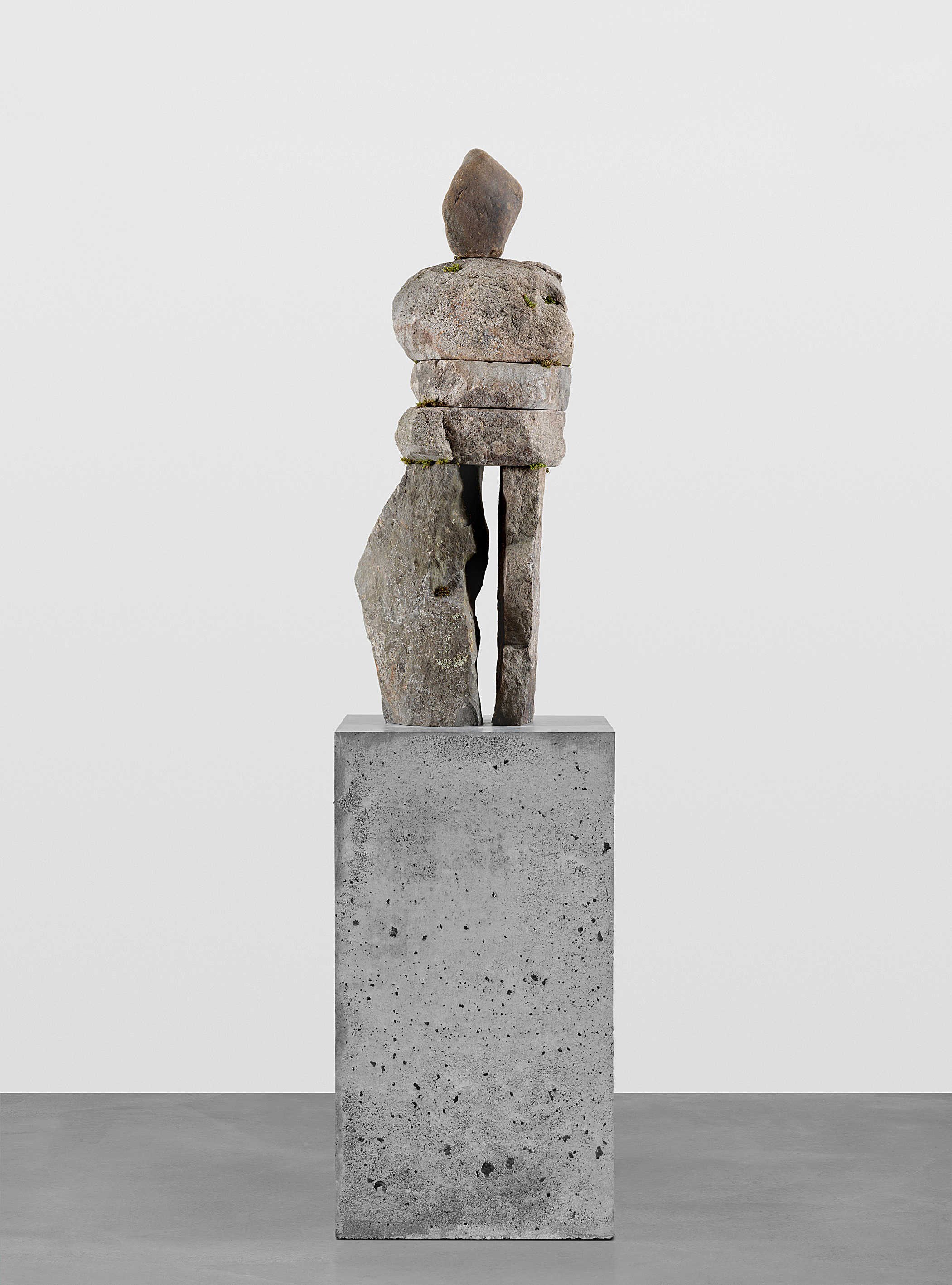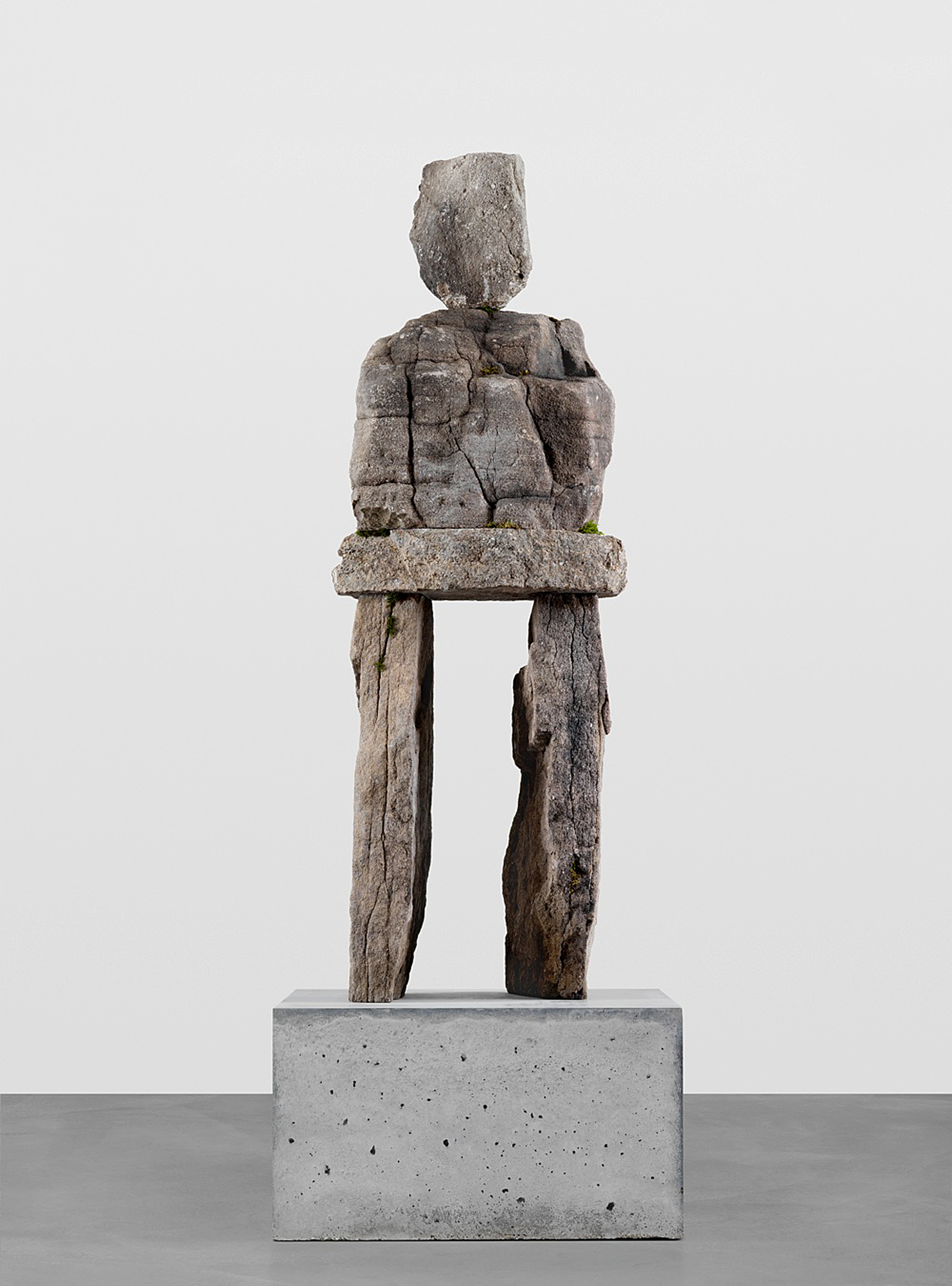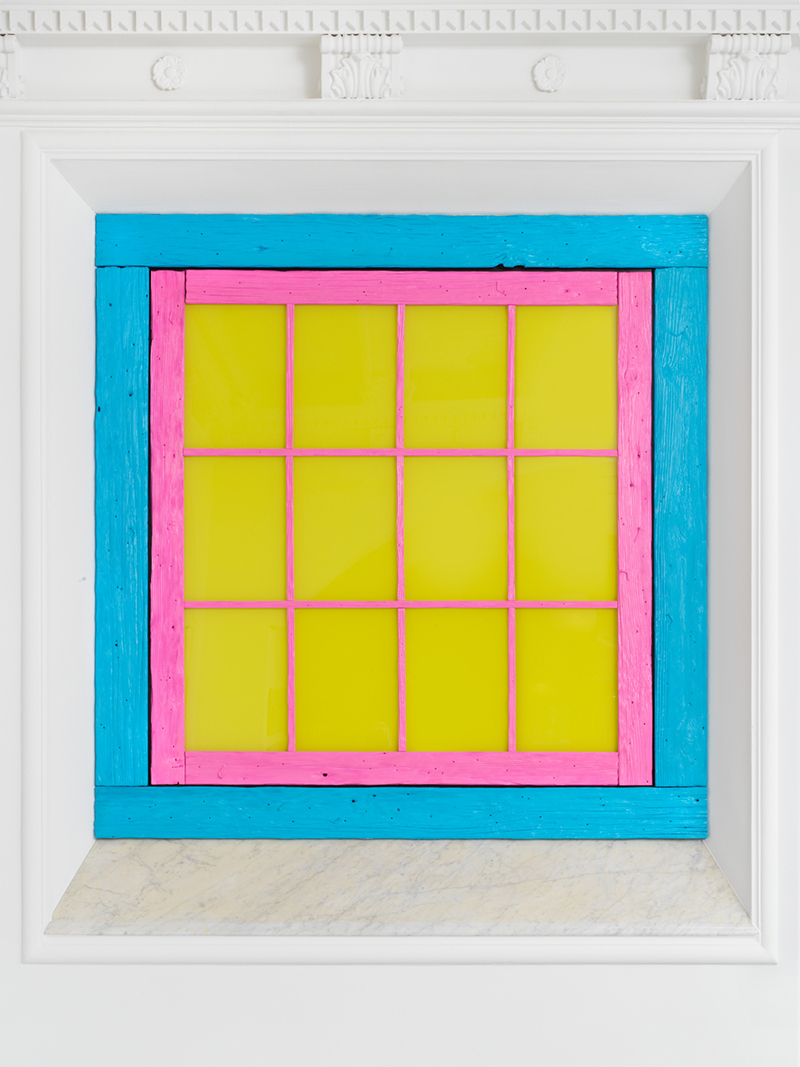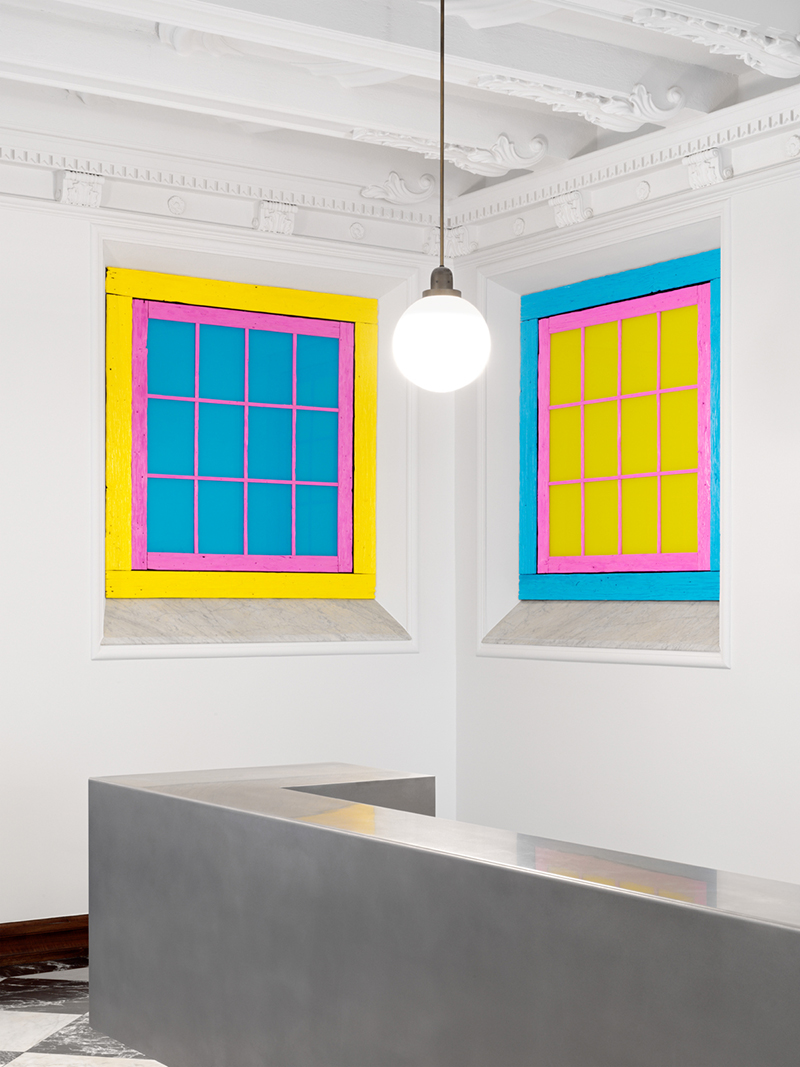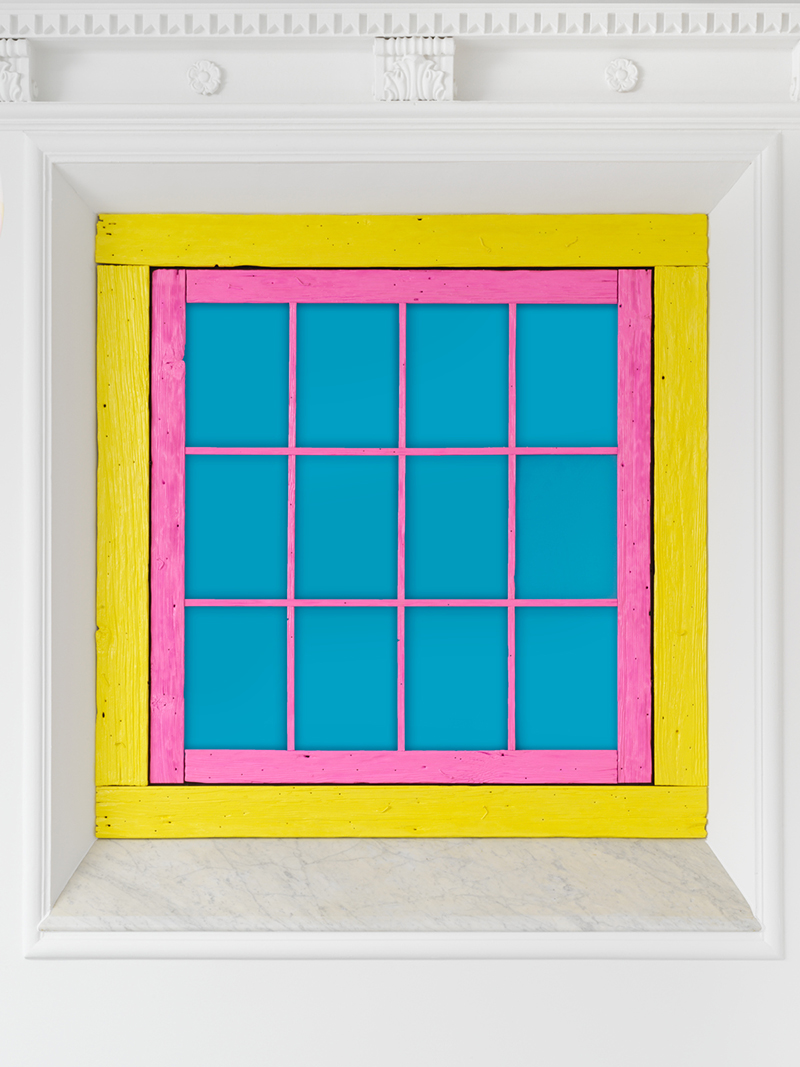Now a New York resident for over ten years, Ugo Rondinone was born in Brunnen, in the canton of Schwyz, in 1964. From 1986 to 1990 he studied fine arts in Vienna at the Hochschule für Angewandte Kunst.
The artist then regularly made appearances in the guise of a solitary clown character that functioned as an alter ego. This disillusioned and melancholic figure enabled Rondinone to evoke a disenchantment characteristic of the contemporary era. With his defeated, silent air, this clown appeared in various videos or as a mannequin slumped on the floor, like a dejectedly idle, lazy character, the opposite of the humorous role that is usually attributed to him. This use of travesty as an esthetic form continued with photographic montages of Ugo Rondinone’s face on the bodies of female fashion models, creating a strangely hybrid figure that still had a certain melancholic quality. During this period, his performances and installations quickly earned him recognition on the Swiss and international scenes.
Little by little, Rondinone extended his artistic practice to sculpture, painting, photography and video, giving rise to a protean body of work in which references intermingle. The metaphorical clown character withdrew and the artist developed a very formally diverse universe. Closed doors, giant lightbulbs hung from the ceiling, olive trees that are leafless, transparent or whitened, grotesque masks or monumental sculptures in organic and mineral forms, his installations seem to reveal hints of scenarios, but without offering any explicit narrative. They rather have the fragmentary, ungraspable quality of dreams or mental landscapes that unfold in a space that is just as real as it is imaginary.
Instead of creating works, Rondinone shapes atmospheres, even universes, through sensory environments that provide a glimpse of an inner world. He assumes the role of the poet of passing time, speaking to us about voids and absence in order to better elude them, through a body of work that expands and develops like a constellation.
His works are featured in the most important collections, including MoMA, the Centre Georges-Pompidou and the New Museum in New York.
The artist then regularly made appearances in the guise of a solitary clown character that functioned as an alter ego. This disillusioned and melancholic figure enabled Rondinone to evoke a disenchantment characteristic of the contemporary era. With his defeated, silent air, this clown appeared in various videos or as a mannequin slumped on the floor, like a dejectedly idle, lazy character, the opposite of the humorous role that is usually attributed to him. This use of travesty as an esthetic form continued with photographic montages of Ugo Rondinone’s face on the bodies of female fashion models, creating a strangely hybrid figure that still had a certain melancholic quality. During this period, his performances and installations quickly earned him recognition on the Swiss and international scenes.
Little by little, Rondinone extended his artistic practice to sculpture, painting, photography and video, giving rise to a protean body of work in which references intermingle. The metaphorical clown character withdrew and the artist developed a very formally diverse universe. Closed doors, giant lightbulbs hung from the ceiling, olive trees that are leafless, transparent or whitened, grotesque masks or monumental sculptures in organic and mineral forms, his installations seem to reveal hints of scenarios, but without offering any explicit narrative. They rather have the fragmentary, ungraspable quality of dreams or mental landscapes that unfold in a space that is just as real as it is imaginary.
Instead of creating works, Rondinone shapes atmospheres, even universes, through sensory environments that provide a glimpse of an inner world. He assumes the role of the poet of passing time, speaking to us about voids and absence in order to better elude them, through a body of work that expands and develops like a constellation.
His works are featured in the most important collections, including MoMA, the Centre Georges-Pompidou and the New Museum in New York.
